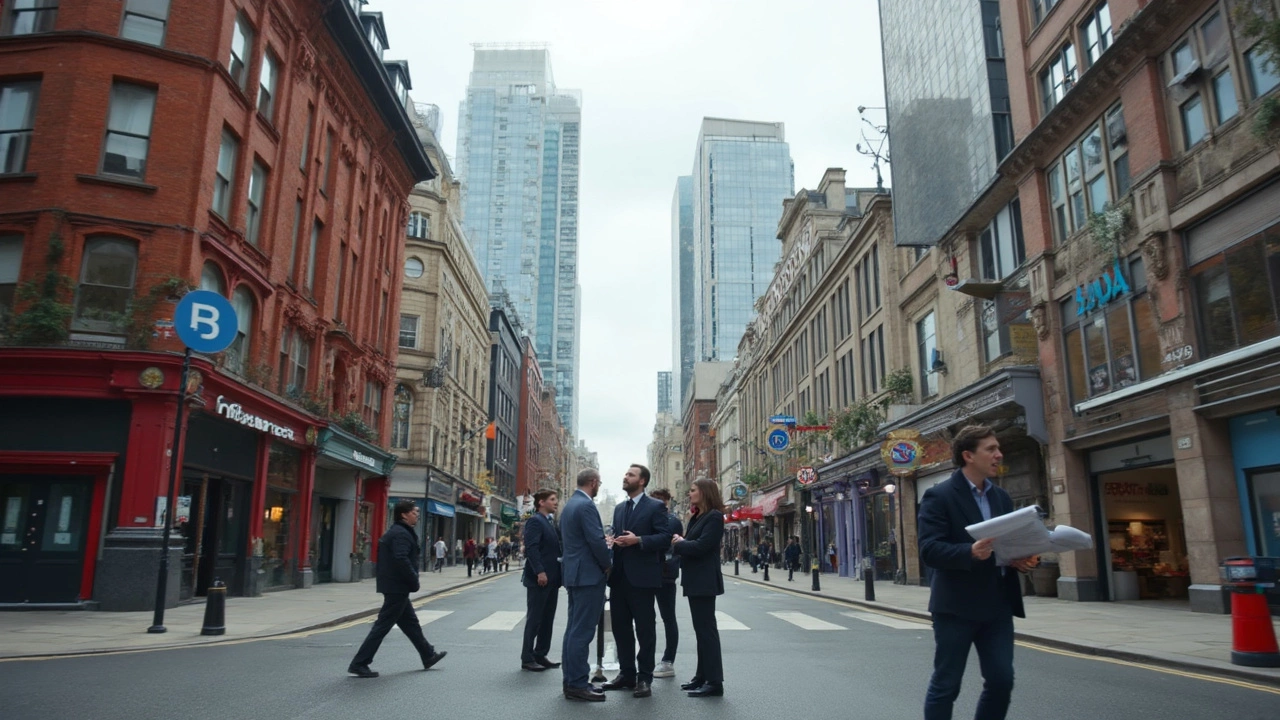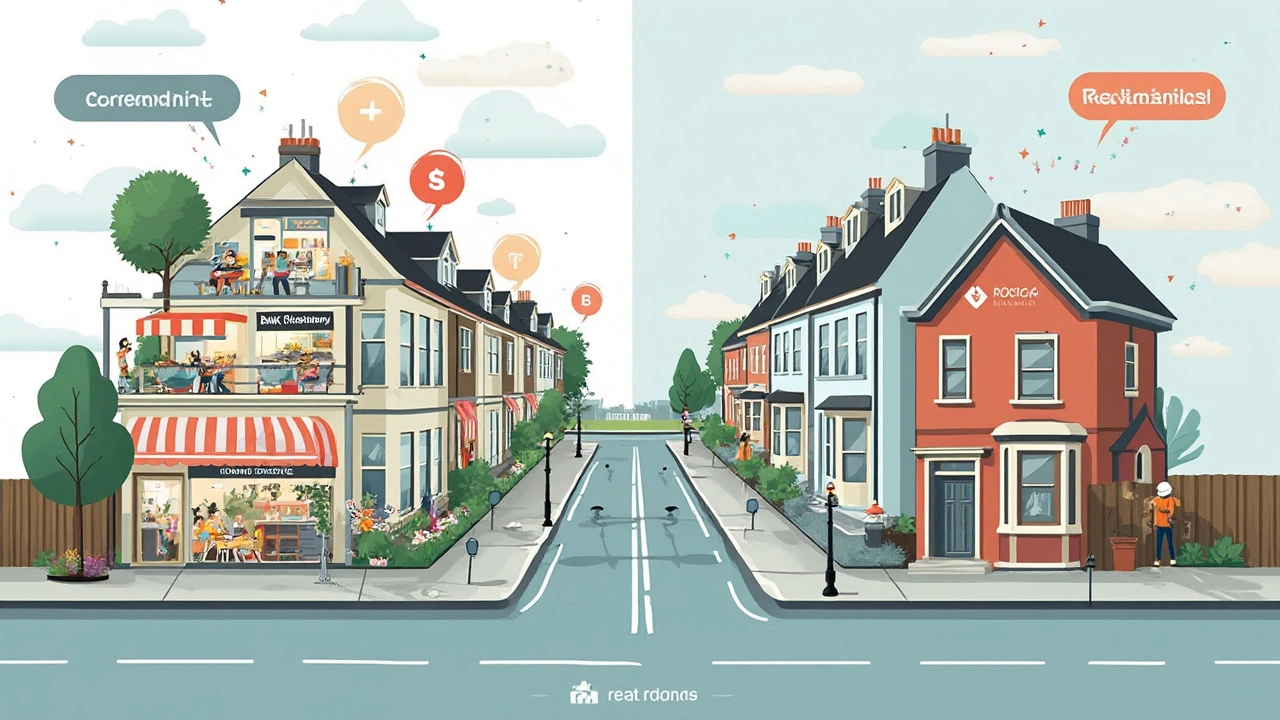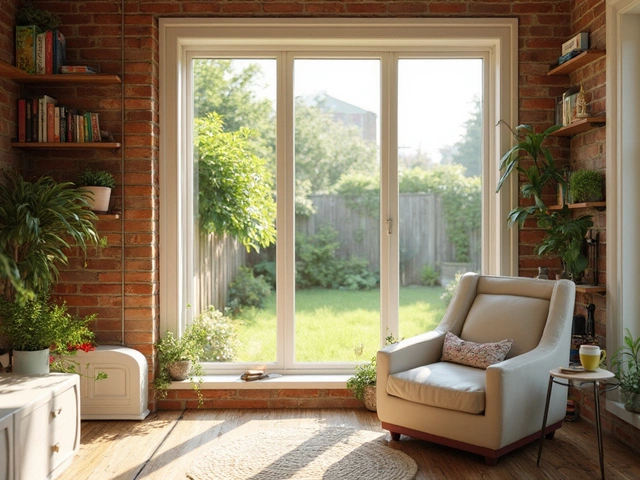
Wondering if a building really counts as 'commercial'? You're not alone. The word gets tossed around a lot, but what does it actually mean for a space or project? In commercial construction, 'commercial' isn't just a buzzword—it's a legal and practical classification that shapes every part of how a building is designed, built, and used.
Basically, if a space is built for business, public service, or professional use—rather than for folks just living there—it's usually commercial. Think office towers, restaurants, retail shops, clinics, hotels, and warehouses. But there's some gray area, especially with mixed-use properties or spaces that shift function over time.
Why does this classification matter? It affects everything from building codes to insurance costs. Even the number of fire exits or parking spaces comes down to your building's label. If you've got a project on your hands and aren't sure where it fits, knowing these basics saves you headaches (and money) later.
- Defining Commercial Construction
- Types of Commercial Properties
- Commercial vs. Residential: Key Differences
- Zoning and Regulations
- Tips for Identifying Commercial Spaces
Defining Commercial Construction
So, what puts a building in the 'commercial' category? It’s all about what the space is used for. In the eyes of building officials, a commercial property is one that’s built for business activity—not for people to live in full-time. This could mean everything from clothing stores and coffee shops to gyms, hotels, warehouses, clinics, and even huge movie theaters.
The line is pretty clear: commercial construction involves projects where the end goal is making money, offering a service, or operating a business. Residential buildings, on the other hand, are mainly for people to call home—think houses, apartments, or condos.
Interestingly, government offices, schools, and hospitals also fall under the commercial umbrella—not because they’re for-profit, but because they serve the public and are not for private living. If you see large elevators, multiple restrooms, or extra-wide hallways, chances are you're in a commercial space. These buildings follow stricter building codes and safety standards than residential projects. For example, commercial spaces need things like high-capacity fire suppression systems and plenty of exits because there are more people coming in and out.
Here are a few things that set commercial construction apart:
- Designed for business or organizational use, not private living
- Must meet tough building and safety codes
- Usually built with larger spaces, more complex systems, and specialized features
- Zoned differently than homes or apartment buildings
If you’re ever unsure if something counts as commercial, check the intended use and local zoning laws. But if it’s a property built for running a business or serving the public, you’re probably in commercial construction territory.
Types of Commercial Properties
Commercial properties come in all shapes and sizes, but each type has its own purpose and set of rules. You can’t walk down a city street without spotting a bunch of them—most places you work, shop, or grab a coffee fall under this category. But let’s break them down so you can actually tell them apart.
- Office Buildings: These range from skyscrapers full of corporate offices to small stand-alone buildings for doctors, lawyers, or tech startups. There are even Class A, B, and C ratings based on location, age, and amenities.
- Retail Spaces: Think malls, shopping centers, stand-alone stores, and even that strip of fast-food joints by the highway. If it's a place where you buy something, it's probably retail commercial space.
- Industrial Properties: Warehouses, factories, storage units, and even some data centers fall into this group. These buildings usually have higher ceilings, loading docks, and lots of space for trucks and inventory.
- Hospitality Properties: Hotels, motels, and resorts depend on commercial classification to meet different safety codes and guest requirements.
- Special Purpose: Not everything fits in a neat box. Movie theaters, bowling alleys, gas stations, and schools all get their own commercial label because of unique design and zoning needs. Hospitals and some medical clinics are also usually commercial, but rules can get complicated with healthcare.
The International Building Code says,
“Occupancy classification is the key to identifying and applying the correct building code requirements, fire protection standards, and occupant safety rules.”Knowing your property’s category isn’t just about paperwork—it’s about keeping everyone safe and legal.
Here’s a quick tip: If lots of people gather, stuff gets sold, or heavy machinery is involved, you’re probably looking at a commercial property. And if you ever need to double-check, your local city or county planning office can tell you exactly how your building is classified. That’s not just for curiosity—misclassifying a building can land you in trouble with code enforcement or even void your insurance.

Commercial vs. Residential: Key Differences
If you’re comparing commercial spaces to residential ones, there are some clear lines that separate the two. First off, it’s all about what happens inside the building. Commercial buildings are made for businesses—think shops, offices, restaurants, or anything where goods or services are sold or delivered. Residential, on the other hand, is everything built for people to live in, like houses, apartments, or condos.
Building codes are stricter for commercial construction. Why? Because commercial spaces usually deal with more people coming and going, and there’s more potential for things to go wrong. For example, a big office has lots of exits, sprinklers, fire alarms, and specific rules for things like accessibility (ADA compliance in the US). Residential codes focus mainly on safety and livability for families or individuals.
There are other big differences too:
- Commercial construction usually means larger scale projects, bigger budgets, and more moving parts (like elevators, security systems, and professional kitchens).
- Financing for commercial properties is handled differently than getting a home loan. Lenders look at business plans, lease agreements, and cash flow, not just personal income.
- Zoning rules play a huge role. Cities have maps that say what can be built where—some areas are only for homes, some are only for business, and some are mixed-use.
- Insurance and liability coverage are higher for commercial spaces because the risks and the number of people involved are higher.
So if you’re eyeing a building and wondering, “Is this commercial or residential?” check what’s happening inside, how the building is approved to be used, and which codes and rules apply. That’ll usually give you a straight answer.
Zoning and Regulations
If you’re messing with commercial construction, zoning laws and rules will make or break your plans. Every city or county breaks land down into different zones: commercial, residential, industrial, and sometimes mixed-use. You can’t just throw up a store or an office building anywhere you want—zoning makes sure the right types of buildings go in the right places.
Commercial construction zones come with their own set of rules for what you can build. If you want to open a bank, gym, or restaurant, you need a plot that’s zoned for that type of business. Mess this up, and you might land in expensive legal trouble—or be forced to stop building altogether.
- If your project doesn’t fit the current zoning, you might have to apply for a rezoning or a conditional use permit. This can take months and isn’t always a sure thing.
- Setbacks, building heights, and even how much of your land you can cover with a building are all spelled out in local codes.
- Many cities require traffic studies or environmental reports for new commercial developments, especially bigger ones.
Besides zoning, you’ll face other regulations stacked on top: fire codes, accessibility rules, and health regulations if you’re building a restaurant or medical clinic. Each type of commercial property comes with its own checklist. For example, offices and warehouses typically need more parking lots and stricter fire safety plans than your average house.
Check out this table for some common commercial zoning requirements in different types of cities:
| City Type | Typical Setback (ft) | Max Building Height (ft) | Min Parking Spaces / 1000 sqft |
|---|---|---|---|
| Urban | 5 | 200 | 1 |
| Suburban | 20 | 60 | 4 |
| Small Town | 25 | 35 | 5 |
Bottom line: Always check local ordinances before you draw up blueprints or sign lease agreements. Even a great project can get shut down if it doesn’t hit the right zoning mark.

Tips for Identifying Commercial Spaces
You don’t want to guess when it comes to spotting a commercial property. It’s not always enough to trust the way a building looks—there are some dead-simple ways to know for sure.
First, check the zoning: almost every city keeps zoning maps online. If the property sits in a business, industrial, or mixed-use zone, that’s a major clue it’s commercial. Residential zones are usually for homes, while commercial or industrial means business is expected.
Don’t ignore the purpose of the space. If people are working there, shopping, getting medical care, banking, eating out, or staying overnight (as in a hotel), it’s likely a commercial property. If it’s mainly someone’s home, it’s residential. Some buildings mix uses (like apartments above a coffee shop), and those often have special categories.
Take a look at permits and property records, if you can get them. These will usually spell out how the space can be used. Local building departments can confirm this in minutes—just call and ask. Skip the guesswork and get the facts straight from the source.
- Commercial construction spaces usually require more intense safety measures. This means extra exits, sprinklers, alarms, ADA ramps, and even higher standards for ventilation and materials. Inspectors will check these details closely.
- Insurance costs more for commercial spaces, even if the building looks the same as a house. If you see high insurance quotes or special business policies required, that’s a giveaway.
- Parking is a sneaky clue: commercial properties often have bigger lots or more structured parking rules than residential spots. There may even be requirements for accessible spots or delivery areas.
Here’s a quick pointer from the Small Business Administration:
"A space is considered commercial when its primary function supports business activities, whether it’s for selling goods, offering services, or supporting office operations."
If in doubt, snap a photo and visit your local planning office. They see this stuff every day and can spot commercial uses at a glance. Always remember—once you’ve confirmed it’s commercial, all the extra rules and expectations kick in. Better to know on the front end than get caught off guard later.




